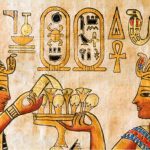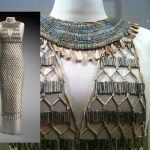Ancient Egyptian Foods
We’re going to know everything about the Ancient Egyptian Foods in detail through this digital report from FTS blog.
And then when it did come to ancient Egyptian gastronomic behaviours, it is evident that they ate far better than most people from any other ancient culture in the world, especially modern cultures. Most of what the ancient Egyptians did eat and did drink is derived from images on tomb walls, providing containers as well as food left in graves, as well as inscriptions of hieroglyphic texts. The most popular method of art discovered depicts the increasing, discovering, or preparing of food.
Ancient Egyptian Foods
Ancient Egyptian food was provided primarily by Egyptian growers. The rich, rich ground that resulted from the Nile’s seasonal flooding was ideal for agricultural production. Growers collected the property two to 3 times per year.
Beer
Beer, together with bread, was the most famous mainstay in ancient Egypt, and it has been consumed regularly. In reality, beer was the favored beverage of normal folk as well as gods, the wealthy and strong, young and old alike. Beer has always been a part of the first food of the day or supper. It’s no surprise that with so much alcohol in their everyday diet, almost everything Egyptians experienced life on the high side. Beer, along with bread, oil, veggies, as well as seasonings, was an essential element of employees’ pay from their bosses. All through Prehistoric time, the regular everyday ratio was 2 containers usually containing mildly more than 2 liters apiece.
Bread
The key ingredients of ancient Egyptian bread have been wheat (malted grains), a form of millet, and wheat. Other components included yeast, dairy, salt, seasonings, fruits, veggies, syrup, egg whites, and butter.
After production, the wheat would’ve been threshed and winnowed to detach the grain from the scraps and to ensure there is no serious pest before being stored in silos.
While it was time to start making the daily bread, the parts would indeed be removed from storage to start the lengthy and exhausting procedure.
Men might well generally do the first step of the task, as with textile materials, and then women would be doing the remainder.
Then came the milling process, which has been done by women as well as took hours each day. The mills were typically left on the ground, with the women kneeling over them. Later, during the Kingdom, the mills were raised, which made them better to handle.
Because the bread has been the most popular ancient Egyptian food, the Egyptians created a way to grind the wheat much faster. They might well mix sand or floor rock into the ball mill with the grain, which also sped up the milling and resulted in faster flour production.
Sadly, this resulted in significant tooth wear. The majority of mummifies were discovered with their gums worn to the pulp.
Look here; Ancient Egyptian Technology
Wine
Wine, as well as ancient Egypt, have a long history together. Egyptians were told to drink wine as back as 3000 BC. The Egyptian term for wine predates any other word for champagne known to humankind. Wine became a famous consumer item in ancient Egypt by the 18th century, with both red and white wines obtainable to all.
The ancient Egyptians made champagne by picking a piece of fruit and squeezing all of the beverage out of them by having to step into them in a downwards big enough to contain at least 6 men. This concoction was enclosed in a terracotta pot with the date and winery imprinted on it, nearly precisely as it is presently. Wine has mostly been devoured at the trial of the Pharaohs for most of ancient Egyptian history.
Food Supplements
The ancient Egyptians cooked with a lot of food preservatives and seasonings, mostly oil. They had 21 multiple names for the various vegetable oils derived from soybean, witch hazel, flax seed, daikon seed, wasabi, sunflower oil, as well as facilitating. Horseradish oil has been well-known for its popularity. Sodium, aniseed, caramel, cilantro, garam masala, dill, anise, methi, marjoram, mustard, as well as thyme were also favourites. Sugar did not show up in ancient Egypt until many years later, but sugars such as syrups created from dates, fruit, as well as fruit were used to add flavour.
A Wide Range of Beverages
Fruit juice has been important in ancient Egypt, though it was not as widely consumed as other fruit-based foods (such as beer and wine). Fruits with sweetness were mainly used to make cranberry juice. The Egyptians preferred grapes and figs, that they would push till every drop of juice was extracted. In addition to honey, syrup created from non-fermented grape juice as well as other fruits such as dried apricots, date and time, figs, carob, as well as the root of the chuba, a plant starting to grow in the theta marshes, used to have a pleasantly sweet flavour that was used for sweetness.
Vegetables
The ancient Egyptians consumed vegetables as a side dish to their meals. Because of the Nile’s seasonal flooding, most of the land riverbanks were fertile as well as ready for agriculture. Vegetables were a popular food among the poor because poorest families resolved on its banks. Nevertheless, veggies were also common among many well-off Egyptians, who ate them alongside other foods like meat and bread. Red onion, garlic, leeks, lentils, cabbage, cucumbers, parsnips, beans, and cucumbers are amongst the most widely developed and ingested veggies.
Meat
Fish was the most commonly used type of flesh food consumed in Egypt because the Nile gave great fishing. The fish was left to dry as well as salted before being fried or cooked.
Geese, ducks, pigeons, as well as quail also were plentiful. Because they’d be caught in the jungle, the poor might afford food for them more than livestock. The Egyptians later tamed and brought up fowl for meals.
Cattle meats like beef, pork, sheep, as well as goat have been less popular. The wealthy can afford to eat people more frequently, but the poor only could do so on special occasions. Meat from wildlife, including such lordy, was also available back then.
Fruit
Once more, because a large amount of land was fecund due to the annual flooding of the Nile, the Egyptians grew and ate a diet rich in fruits. It is hard to account for all of the fruit food consumed in ancient Egypt, although there is recorded proof of fruits high in sugar and nutrients being common. Apple, olive, as well as pomegranate tree branches, were introduced to Egypt somewhere during Hyksos’ reign or later. Since they were accessible, grapes, as well as figs, also were famous fruits. Coconuts, on either side, were shipped luxury products that only wealthy Egyptians might pay. The existence of these fruits in folk’s everyday diet is seen in the remnants discovered across several places.
What exactly is Egyptian food?
Style food from ancient Egypt. The food of ancient Egypt spans placed than a white three thousand years, but so many coherent characteristics remained until about Greco-Roman times. Bread and beer were mainstays of both poor and wealthy Egyptians, often preceded by green-shooted onions, both these vegetables, as well as, to a smaller extent, meat, game, as well as fish.
Look here; Greatest Pharaohs in Ancient Egypt
Did you notice that these ancient Egyptian foods still are currently available?
Numerous people seem to be surprised to discover that some of the food consumed by the ancient Egyptians are still recently eaten! For instance, fuel medammes, a white bean meal which is often eaten for brunch, has become Egypt’s National Meal and also was ingested during the Pharaonic time frames.
What was the main source of sweetness in ancient Egyptian cuisine?
Honey was the main source of sugar substitute in ancient Egyptian cuisine, and it was incredibly costly because it was gathered from the jungle either from household bees kept in pottery hives.
What were the sugar substitutes used in ancient Greece?
Honey was a popular sweetener not just in Greece, but in other ancient cultures such as Egypt. In Greek Culture, honey isn’t the only sweetener obtainable. Grape should indeed juice, in cooked form, was also used to add a sweet taste to food products.
What were the various sources of protein in Egyptian Civilization?
Fish from the Nile was indeed a form of protein for the ancient Egyptians, and they were frequently brined or dried to retain them.
What did ancient Egyptians eat daily?
With these aspects in mind, the ordinary macronutrient proportions in ancient Egyptian nourishment were most probable 45-55 per cent carbohydrates, 25-35 per cent nutrients, as well as 15-25 basis points fats. The meals mentioned below would have been prevalent in the ancient Egyptian diet, and are organised approximately by food category.
What did ancient Egyptians eat?
Bread, beer, and veggies were the staples of ancient Egyptian nutrition. The Egyptians’ diet was heavy on bread and (nutrient) beer due to the abundance of grain and emmer wheat, while continues to advance in farm animals and agricultural production permitted for adequate intake of plant-based foods.
In closing
We discovered everything about Ancient Egyptian Foods in detail through the previous points, and we hope you like it too much.








